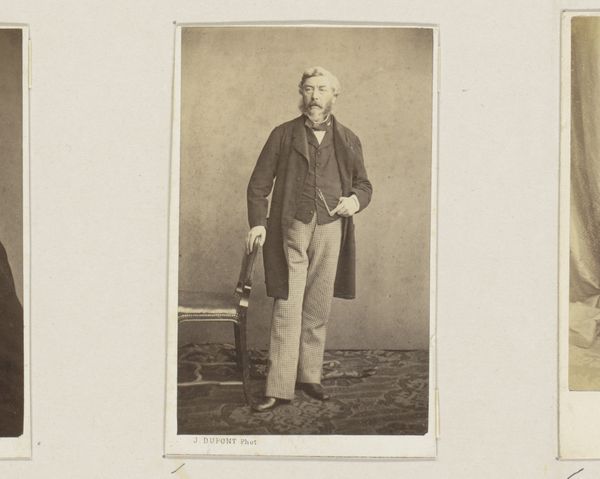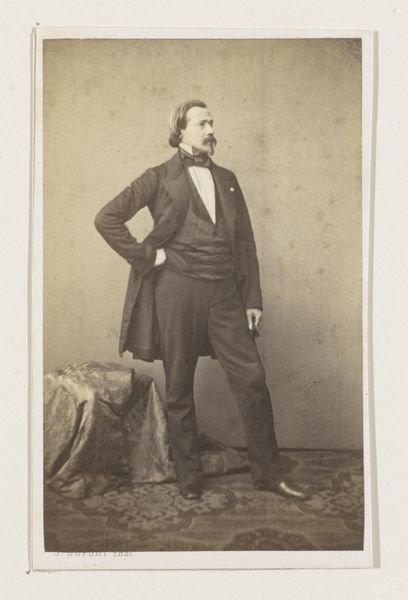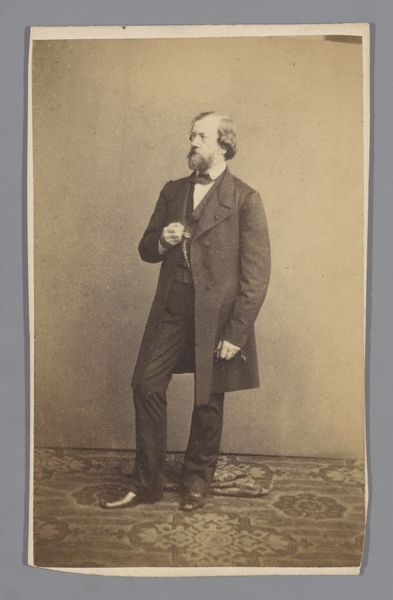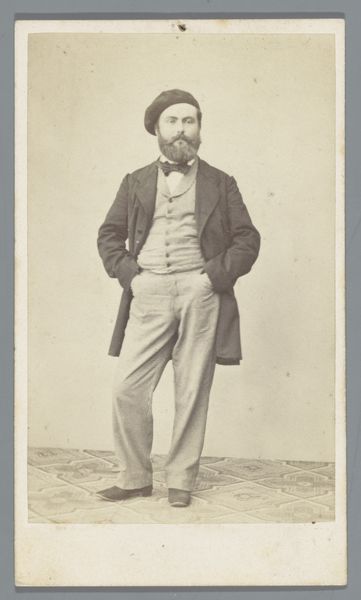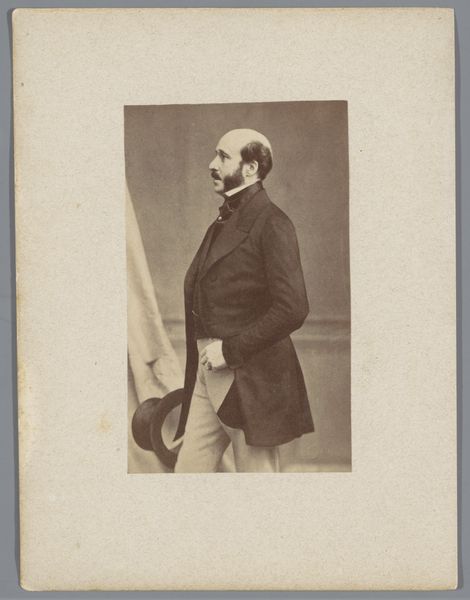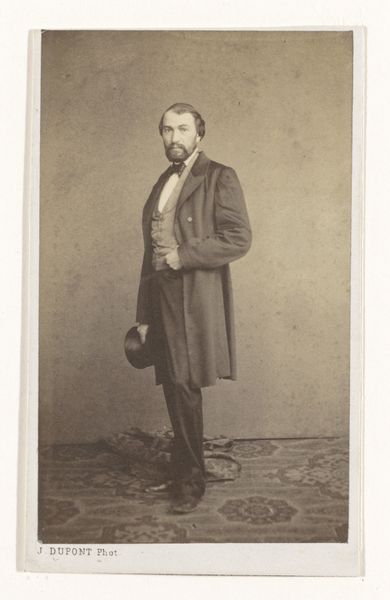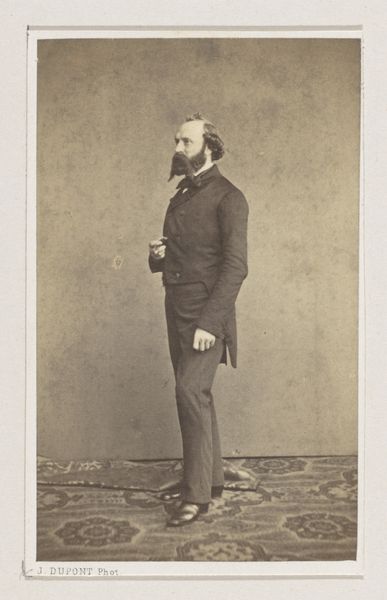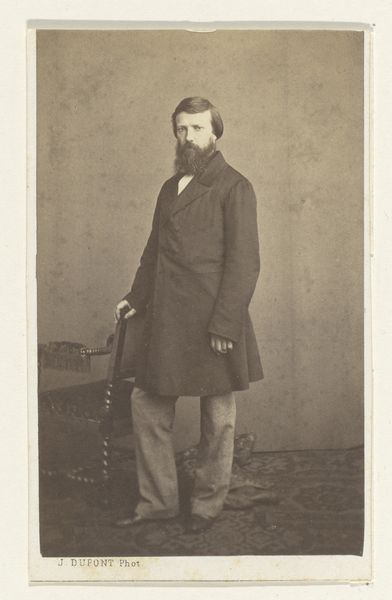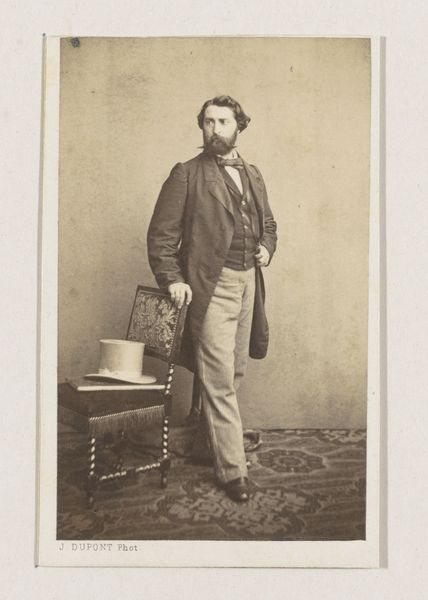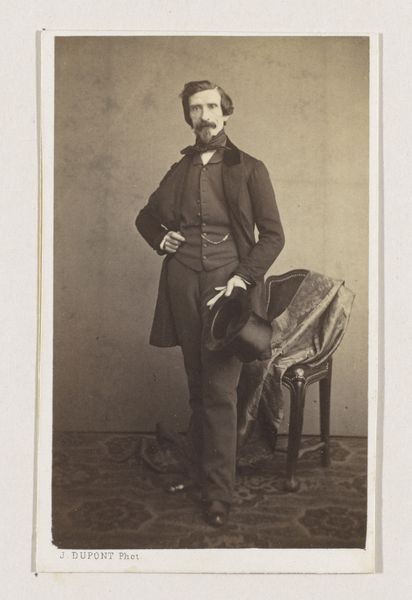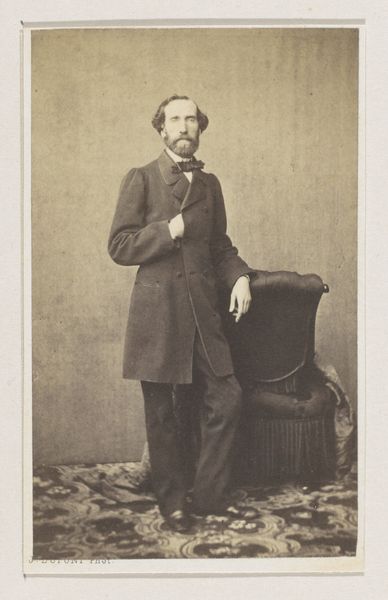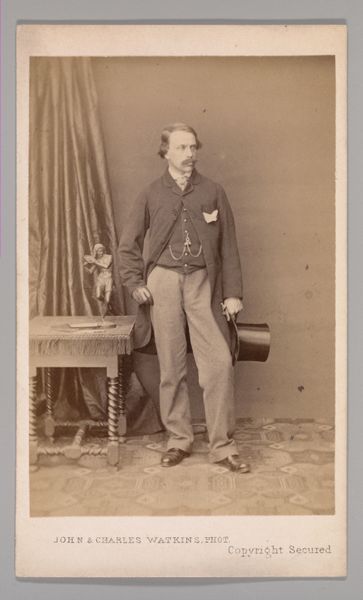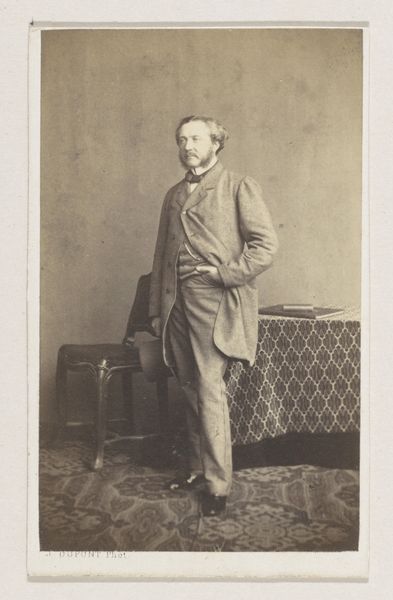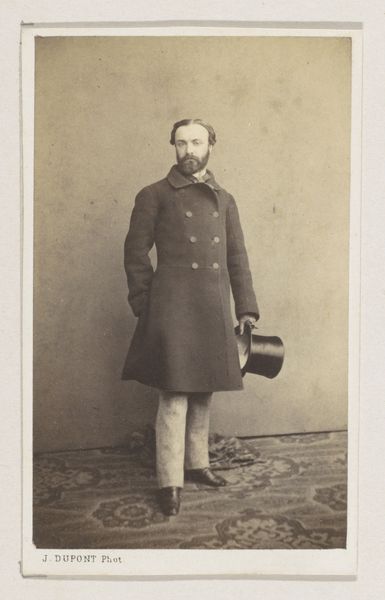
Dimensions: height 101 mm, width 62 mm
Copyright: Rijks Museum: Open Domain
Editor: This albumen print by Joseph Dupont from 1861 is titled "Portret van de graveur Jean Baptiste Pierre Michiels, ten voeten uit." I'm struck by the formality, the way he's posed so stiffly with his hat and leaning on the chair. How can we read into this portrayal today? Curator: It's fascinating how the supposed objectivity of early photography, like this albumen print, actually performs very specific roles in constructing identity. The formal pose, his attire—all of it speaks to the performance of class and status. Think about who had access to portraiture at this time. Who was being excluded? And what social norms were being reinforced by this very act of capturing someone’s image? Editor: That makes me think about the role of the photographer. What power dynamic was at play during the sitting? Curator: Exactly. Dupont, the photographer, had the power to frame and construct Michiels’s identity in a very deliberate way. But even more broadly, think about the consumption of images like this, the gaze directed towards it, especially if these were produced and consumed withing specific social circles. Is this meant to uphold specific beliefs? What is being projected by his dress, demeanor, and position? It’s not just a picture; it’s an assertion of belonging. Editor: It's unsettling to think about the level of control inherent in the image, but also a sign of the times. Curator: Precisely. What seemed like simple documentation at the time can reveal intricate layers of social dynamics and ideological constructions. We are not just appreciating artistic talent, but actively uncovering social narratives from the past. Editor: This conversation completely changed how I see the photo now, and its original function, beyond an image. Curator: And that’s the real power of engaging with art: connecting historical representation with modern reflections on equity and access.
Comments
No comments
Be the first to comment and join the conversation on the ultimate creative platform.
